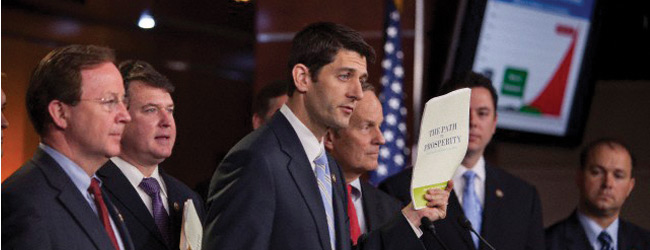
In business, nothing moves faster than capital. These days—where billions can move halfway around the world with a mouse click, or professional football teams can change cities overnight—your success can be enhanced by a change in venue. Face it, some places want taxpaying, job creating, community-investing people like you, and some jurisdictions will take you for granted, convinced that you are too lazy to act in your own best interests. Opportunities and disincentives from state and local governments direct the flow of investment capital as much as any other factor.
Today, as we emerge from the worst recession since the Great Depression, state and local governments are competing to get you more aggressively than ever before. As we all know, competition breeds efficiencies and eliminates the weak, and we can see and hear competition between governments who want you and are willing to work to get you. It is as easy as listening to the radio, especially the news and news talk stations.
Here in Illinois, after a lame duck tax increase almost doubled personal and business income taxes, New Jersey Governor Chris Christie is advertising that there will be no tax increases in New Jersey while he is governor. Scott Walker, the new Wisconsin governor, toured Illinois promising to reverse years of anti-business actions. Furthermore, he also invited businesses to take advantage of the major tax breaks to relocating companies and that Wisconsin is now “open for business.” Indiana Governor Mitch Daniels trumped them all by reminding the Illinois business community that Indiana made the tough choices and limited the size and avarice of Indiana governments two years ago and now is the time to move your Illinois business east to a much friendlier Indiana. The Illinois governor lamely responded that he won’t do it again, just like five of his last seven predecessors (three of whom went to prison) also promised.
This scene is being repeated all over the country. Even historically, the business crippling former attorney general and now New York Governor Andrew Cuomo attacked his own legislature for its consistent hostility to private enterprise. States, counties and cities are falling all over themselves to attract business. How can you take advantage of these opportunities?
The first question is: Can you move? Some businesses are totally tied to a community and cannot. Most can serve their customer base by moving to a friendlier locale or county and still keep their core business contacts. Many businesses who consider themselves rooted to a community really aren’t. To rephrase the question: Where are your customers and where must you be to serve them? If you are filing tax returns in multiple states, the answer is obvious. If you have businesses in multiple counties, the answer should be just as obvious.
The next question should be: How can you get your underperforming partner (the gov’mint) to contribute more to the business? An analysis of how your business intersects with government policy and your community is necessary to understand the potential benefits of shopping for a better partner. The most obvious is tax policy. The other side of this coin would be grants and abatements that are not as well known, but exist almost everywhere. Business taxes, and your personal income taxes, take directly from the bottom line. Business taxes come in all shapes and sizes. State (and local) corporate income taxes, local property taxes, unemployment taxes, sales taxes, franchise taxes and fees do not come close to defining the extent of the creativity of the taxmunching class. The tax atmosphere you operate in is a matrix and controlling only one tax misses the big picture.
Beginning with corporate income taxes, the biggest is Iowa at a whopping 12 percent top rate. Pennsylvania, Minnesota and Massachusetts are next at near 10 percent. Nevada, South Dakota and Wyoming have no corporate income tax. Texas is next at 1.6 percent. Guess which state had the fastest rate of growth in the last 10 years? Texas.
As stated previously, capital moves toward opportunity. Sales tax, and its ugly brother the use tax, are the additional cost of everything you buy that is not a component of the salable product. The highest state is California, but local options can affect this cost greatly. Illinois can range from 6.25 percent to 12 percent in the city of Chicago. Moving a few miles to a new county can save thousands of dollars in purchasing costs and you can still keep local customers. The states of Alaska, Delaware, Montana, New Hampshire and Oregon have all eschewed this nasty and regressive tax that even liberals claim to hate.
Personal income rates not only affect you, the business owner, but each of your employees. Your staff understands how take-home pay affects their quality of life and they know how to use the interstate system to find a better deal, taking everything you invested in them as they leave. The states have differing rates, exemptions and deductions, so direct comparison takes a little effort.
As an overview, Hawaii and Oregon have the top rates at 11 percent for taxable income over $200,000 and $250,000, respectively. However, California nails its residents with a 9.55 percent rate for income over $47,055, the most onerous income tax on middle- and working-class people in the country and a major cause of the current outmigration from the state. Iowa is almost as bad. New Jersey, New York, Idaho, Rhode Island, Minnesota, Vermont and the District of Columbia all have personal state tax burdens significantly above the rest of the nation. In addition, 14 states have local income taxes that have to be factored. Watch out if you are considering moving to Maryland, New York or New Jersey. However, with competition, the news is not all bad. There is no personal income tax on earned income in Alaska, Florida, Nevada, New Hampshire, South Dakota, Tennessee, Texas or Wyoming.
There are several other taxes and fees imposed by government that enter into any other competitive equation. Chief would have to be real estate taxes or the involuntary confiscation of real property by local government. A good tax climate created by a state can be destroyed by the local burghers funding their petty political empires with your money. Generally, the farther east and north a state is, the higher the real estate tax burden. Get last year’s property tax bill before you buy or lease. The list of other taxes is endless and before you jump, be sure to master the details of the costs associated with regulation.
Competition between the states for your business presence goes well beyond taxes. The business environment is dominated by what is often the biggest expense you face, the total wage bill. Fifteen states have higher minimum wages than the federal, with Nevada, California, Connecticut, Oregon, Vermont and the District of Columbia at the high end. Also, regulations, additional state Occupational Safety and Health Administration (OSHA) requirements and a host of petty regulations should be considered in your decision to stay or find a more hospitable address
Sooner or later, as your business grows, you will have to face the possibility, or certainty, of the presence of organized labor. Though in some areas, like construction, useful partnerships can be forged. Usually the role of a union is to increase the wage bill and reduce the value of labor, rendering your business less competitive. Periodically, discord will interrupt your operations and look at the political establishment when that happens. Your people run for cover as their people preen on TV. There is good news. Twenty-two states, located mostly in the south, midwest and southwest, have right-to- work laws preventing your employees from being tied to another loyalty.
The economic emergence of these areas is no mistake. Look where the smart money is building new auto plants. German, Korean and Japanese industrial giants are settling in Tennessee, Alabama, Texas and other states famous for the atmosphere of business hospitality. It is the logical result of state and local policies, some which push business out, and some which embrace business. Allow me to illustrate.
I was born after World War II in Brockton, Mass.. As a very young boy, I would ride with my father in his truck, sometimes the entire length of the city on Montello Street. As we rode, I marveled at the huge brick factories, six stories tall, that lined the east side of the street. Parking lots were packed. People were bustling about the sidewalks. The factories buzzed with the activity of tens of thousands of people employed in the shoemaking industry. They were exciting and they were beautiful.
As I got older, I started noticing changes. Parking lots were sparse. There were fewer people around. Then the factories started closing. Weeds spouted from the parking lots and plywood was covering broken windows on the lower floors. “For sale” and “for lease” signs sprouted and then peeled as the years passed. The adjacent neighborhoods of sturdy, well-kept three flats, homes to three successive generations of Swedish, Irish, Italian, Portuguese and other immigrant groups who found their way to Brockton for jobs enabling them to buy their own homes and make better lives for their children, deteriorated also. Small businesses closed. Areas that had never seen crime were now too dangerous in which to walk at night. When I returned from college, I sought old timers whom I met through my dad. When asked, “How did this happen?” the reply was consistent: “The unions killed the shoe industry in Brockton.”
After World War II, union organizers moved out from Boston. Protected by a favorable political climate fueled by a class warfare mentality in Massachusetts, the unions organized, struck and occasionally won. And then they won more often. The owners looked at the 100-year-old factories, the higher cost, lower-quality workforce and the hostile community, and then looked elsewhere. New factories were built in Arkansas, Texas and points south. Some were built in Greece and Italy with Brockton money. Isolated to Brockton? Hardly. Look at Lowell, Lawrence and Lynn, the textile center of the world. In one generation, almost all of the productive capacity relocated to Virginia, the Carolinas, Georgia and Alabama. Capital likes to be appreciated.
We have spoken to the costs associated with high regulation states and the effect on your bottom line. More insidious, and potentially more dangerous, is the destructive capacity of a litigious tort law environment. If your industry, products or business practices make you vulnerable to specious accusations from the greedy trial lawyers bar, look for relief in more realistic areas. The American Tort Law Reform Foundation has done thorough research for years and their annual report “Judicial Hellholes” is a goldmine of information for all businesses. The guests of honor do change with new developments, so be sure to get the most current edition.
Who are the worst? The results might surprise you. Philadelphia (Pennsylvania) and California (particularly Los Angeles and Humboldt counties), have the most business hostile judicial environments. Next? Surprisingly, the entire state of West Virginia. South Florida (Miami area) is perennially high on the “Hellhole” list. Much of Illinois is nationally known for injustices to business. How many times have you seen sleazy lawyers advertising on late-night television and notice the Illinois address? The worst are two counties adjacent to business-friendly Missouri: St. Claire and Madison. Closeby McLean County (Bloomington) and to no one’s surprise, Chicago and Cook County (where corruption isn’t just institutionalized, it is demanded) are always among the last places businesses receive fair treatment in the courts. Other areas of systematic tort injustice include counties in Las Vegas, New York City, District of Columbia, Houston, Albany, N.Y. and New Orleans. The report also cites positive trends in tort justice, so very carefully research the tort environment before you invest your capital, employment and future in a hostile environment.
As in any complex decision matrix, the factors will never deliver a totally black or white answer. Not only must you identify what external factors affect your business, you also have to quantify the effects of them. Rest assured, there are plenty of business-friendly communities eager to partner with you to get your operation to locate there. Tax abatements, construction financing and infrastructure improvements are just a start. Most states and many municipalities and counties have business development specialists to help you get the benefits that are available. The key is take advantage of these benefits. Make the governments compete for your tax dollar. After all, competition is what you are.




